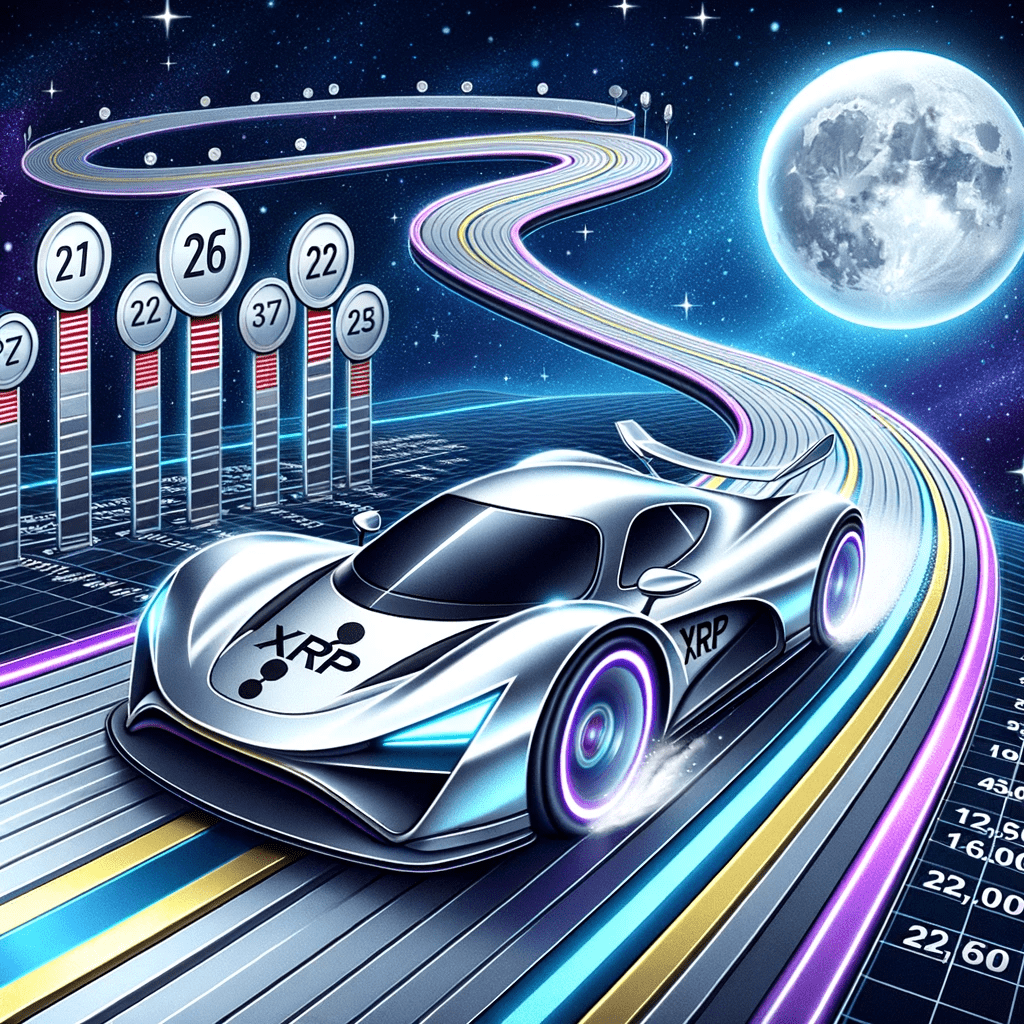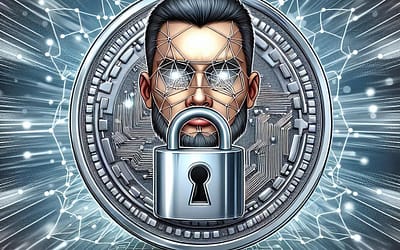Will XRP go up or has it peaked? Spoiler alert, it's going to go way up, like unaffordable for the average investor, so if you're on the fence about this token, you might want to reconsider.
With 2024 around the corner, XRP, the native token of Ripple, is showing promising signs of growth and stability, influenced primarily by regulatory clarity, crucial partnerships, and regulatory advancements. Several factors will propel its value further in the cryptocurrency market, and I can only begin to touch on a couple of prospects. Let's explore further into these growth indicators, the adoption of Ripple's technology by financial institutions, and the prospects of purchasing XRP directly from Ripple, among other related topics.
Adoption By Financial Institutions
Ripple's technology, which facilitates instant cross-border payments, continues to gain traction in the financial sector. Although the exact number of banks utilizing this technology is not publicly disclosed, it's known that close to 30 out of 150 banks have integrated Ripple's technology so far, with over 100 financial institutions, including banks and payment providers, being part of RippleNet.
The company's technology serves as a conduit between traditional financial systems and digital currencies. It provides a platform for instant cross-border transactions, addressing the long-standing issue of slow and expensive international money transfers. This real-world utility makes it an attractive proposition for financial institutions.
Among the early adopters of Ripple's technology are notable entities such as Santander, UniCredit, UBS, ReiseBank, CIBC, National Bank of Abu Dhabi (NBAD), and ATB Financial. These institutions have integrated Ripple to enhance their cross-border payment services, showcasing the practical utility of Ripple's technology in the financial sector.
The Promise of On-Demand Liquidity (ODL)

RippleNet’s On-Demand Liquidity (ODL) service leverages the digital asset XRP as a bridge currency to remove the need for pre-funded nostro accounts in cross-border payments. Currently, banks need to have pre-funded accounts with money in the recipient's currency, creating costs and inefficiencies. ODL uses the XRP cryptocurrency to provide liquidity and facilitate the quick transfer of money across borders.
Here's how it works:
1. The sender's currency is converted into XRP by a cryptocurrency exchange in the sender's country.
2. XRP, which typically settles in three to five seconds, is then transferred to a crypto exchange in the recipient's country.
3. The XRP is converted into the recipient's currency in the second digital currency exchange. This process allows money to be transferred quickly and efficiently across borders, without the need for banks to have pre-funded accounts in every country around the world. The ODL service can therefore lower costs and reduce operational risks for financial institutions. So when you consider these benefits, the question of will XRP go up? The answer is a loud resounding yes. As an investor, you always want to search for a product that solves real-world issues, and XRP serves as a prime example. But let's continue with more.
Unlike traditional banking systems, which operate within specific hours and days, RippleNet's ODL service is available at all times.
4. Transparency: Transactions made via RippleNet's ODL service are completely traceable, providing greater transparency than traditional methods.
5. Scalability: RippleNet's ODL service can scale to handle the same throughput as Visa, making it suitable for institutions of any size.
6. Liquidity: RippleNet's ODL provides instant liquidity for cross-border transfers. Traditional systems often require businesses to hold large amounts of various currencies in accounts around the world, which is expensive and risky.
7. Reduced Risk: By using XRP as a bridge currency, RippleNet's ODL minimizes the risk of currency fluctuations that can occur in the time it takes to complete a traditional transfer. This is particularly beneficial for countries with volatile currencies. Overall, RippleNet's On-Demand Liquidity offers a more efficient, cost-effective, and risk-reducing solution for cross-border payments compared to traditional financial technologies.
Notice the number of times I've mentioned the reduction of risk in this article. XRP does exactly that, which makes it a prime solution for institutions who look for exactly that, reduction of risk.
Can I Buy XRP Directly From Ripple?

It's essential to note that you cannot purchase XRP directly from Ripple. However, there are several other avenues to buy XRP, including cryptocurrency exchanges and brokerage platforms.
You can visit various crypto exchanges depending on your region to purchase XRP. Exchanges such as Coinbase, Binance, MEXC, and many more.
Crypto exchanges, also known as digital currency exchanges (DCE), are platforms where you can trade cryptocurrencies for other assets, such as conventional fiat money or different digital currencies. They operate similarly to traditional stock exchanges. Here's a basic rundown of how they work:
1. User Registration: First, you'll need to sign up for an account. This usually involves verifying your identity by providing some form of government-issued ID due to Know Your Customer (KYC) regulations.
2. Deposit Funds: Once your account is set up, you need to deposit funds. Most exchanges allow deposits through bank transfers, credit card payments, or even other cryptocurrencies.
3. Buying and Selling: With funds in your exchange account, you can now buy, sell, and trade cryptocurrencies. You can place market orders (buy or sell immediately at the current price) or limit orders (buy or sell when the price reaches a certain point).
4. Fees: Exchanges usually charge a fee for each transaction. This can be a flat fee or a percentage of the transaction.
5. Security: Cryptocurrency exchanges implement various security measures to protect the digital currencies stored on their platform. These can include cold storage (storing cryptocurrencies offline), two-factor authentication, encryption methods, and more.
6. Withdrawal: You can withdraw your funds or cryptocurrencies to your personal wallet or bank account. This may also involve fees depending on the exchange and the method of withdrawal. Keep in mind that not all crypto exchanges operate in the same way. Some only allow trading between different cryptocurrencies (crypto-to-crypto), while others allow trading between cryptocurrencies and fiat currencies (crypto-to-fiat).
Some exchanges are decentralized, meaning transactions occur directly between users through smart contracts and there's no central authority. Others are centralized and operated by a company that oversees transactions.
XRP And BlackRock Rumors
Recent narratives suggest a potential partnership between BlackRock and Ripple, which could trigger a notable XRP rally. Forbes hinted that BlackRock might spearhead an impressive rally for XRP, and there's a plan alongside JPMorgan to ignite a significant bull run for XRP in the crypto market.
Although there was a rumor about BlackRock shifting its focus to XRP from Bitcoin, it turned out to be unfounded. Nonetheless, Ripple joined forces with industry heavyweights BlackRock and JPMorgan at the International Swaps and Derivatives Association (ISDA), marking a strategic venture into derivatives and blockchain integration in traditional finance (TradFi).
Remember the crypto markets are highly speculative and the slightest hint of a rumor can send prices swinging in both directions. It's important to keep a level head, and remove your emotions as you navigate these rough waters.
Matt is the founder of TechMalak. When he's not buried face-deep in the crypto charts you can find him tinkering with the latest tech gadgets and A. I tools. He's a crypto investor and entrepreneur. He uses a mixture of A.I and human thought and input into all his articles on TechMalak, further merging man with machine.





